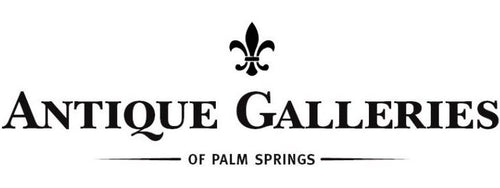The Ins and Outs of Jewelry Appraising

What is your jewelry worth? That's a question we get all the time, and it's not easy to answer. While real estate appraisals rely on the cost of reconstruction and what similar properties have recently sold for, jewelry is not so readily valued. Age, condition, design, maker's markings, size, and the intrinsic value of the stones and metals used in the piece are all part of the equation. And what the appraisal will be used for makes a big difference too. The highlights are below.
To start with, it's important to note that an "appraisal" is different than an "evaluation." To be accepted as such, an appraisal like those used for tax purposes must be done by a certified appraiser. An evaluation can essentially be done by anyone knowledgeable in the category and has no legal standing. Antique galleries like ours do evaluations all the time, but they should only be viewed as informal guidelines to value. Ideally, an appraisal represents a more rigorous analysis.
Now here's the rub. There is no national standard or testing requirement for appraisers, and thus pricing and quality can vary widely. Our own experience in obtaining appraisals bears that out. We've paid for and received an appraisal of many pages that carefully weighed all the variables to arrive at a defensible number. We've also paid much less and received an appraisal of just a few pages with little market analysis or even a careful inspection of the artwork. While both were done by certified appraisers and thus suitable for submission to the IRS, the former was confidence-inspiring and the latter was not. As with most things, you get what you pay for.
With jewelry, appraisals are done for many reasons, including charitable, estate, insurance, resale and tax purposes. Insurance appraisals usually call for estimates of "retail replacement" value; i.e., indications of value when the item was new. "Fair market value" is another commonly used term and is designed to estimate the selling price of the object as-is and under current market condition. Fair market value is usually less than retail replacement value, and sometimes a lot less. Any viewer of Antiques Roadshow will know that their experts will first assign a market value to a piece - sometimes retail value and sometimes auction value - and then follow up with a larger number for insurance purposes. In a formal appraisal, this latter number is generally the retail replacement value.
There is also such a thing as a "hammer value" appraisal, and this represents a rock-bottom estimate of value should the item need to be sold at once in an emergency. This is more common to real estate than jewelry appraisals, but one might consider a pawn shop offer to be akin to hammer value. Unless the seller is in extremis, this is no way to maximize value.
So if an appraisal of your jewelry is required, you first need to know what kind of appraisal you need and who you can engage to have it done. Here in the USA, the Gemological Institute of America offers a library of appraiser associations that is easily accessed online. Some appraisers charge an hourly rate while others will charge by the item. A few will charge a percentage of the final appraised value, a dubious practice in my view that can lead to inflated and potentially indefensible valuations. At the end of the process, you should receive a document that clearly spells out the appraiser's qualifications, identifies without doubt the subject of the appraisal, outlines in detail the methodology used and provides a definitive valuation (not a range). With that in hand, you can move on to doing what you need to do.
To start with, it's important to note that an "appraisal" is different than an "evaluation." To be accepted as such, an appraisal like those used for tax purposes must be done by a certified appraiser. An evaluation can essentially be done by anyone knowledgeable in the category and has no legal standing. Antique galleries like ours do evaluations all the time, but they should only be viewed as informal guidelines to value. Ideally, an appraisal represents a more rigorous analysis.
Now here's the rub. There is no national standard or testing requirement for appraisers, and thus pricing and quality can vary widely. Our own experience in obtaining appraisals bears that out. We've paid for and received an appraisal of many pages that carefully weighed all the variables to arrive at a defensible number. We've also paid much less and received an appraisal of just a few pages with little market analysis or even a careful inspection of the artwork. While both were done by certified appraisers and thus suitable for submission to the IRS, the former was confidence-inspiring and the latter was not. As with most things, you get what you pay for.
With jewelry, appraisals are done for many reasons, including charitable, estate, insurance, resale and tax purposes. Insurance appraisals usually call for estimates of "retail replacement" value; i.e., indications of value when the item was new. "Fair market value" is another commonly used term and is designed to estimate the selling price of the object as-is and under current market condition. Fair market value is usually less than retail replacement value, and sometimes a lot less. Any viewer of Antiques Roadshow will know that their experts will first assign a market value to a piece - sometimes retail value and sometimes auction value - and then follow up with a larger number for insurance purposes. In a formal appraisal, this latter number is generally the retail replacement value.
There is also such a thing as a "hammer value" appraisal, and this represents a rock-bottom estimate of value should the item need to be sold at once in an emergency. This is more common to real estate than jewelry appraisals, but one might consider a pawn shop offer to be akin to hammer value. Unless the seller is in extremis, this is no way to maximize value.
So if an appraisal of your jewelry is required, you first need to know what kind of appraisal you need and who you can engage to have it done. Here in the USA, the Gemological Institute of America offers a library of appraiser associations that is easily accessed online. Some appraisers charge an hourly rate while others will charge by the item. A few will charge a percentage of the final appraised value, a dubious practice in my view that can lead to inflated and potentially indefensible valuations. At the end of the process, you should receive a document that clearly spells out the appraiser's qualifications, identifies without doubt the subject of the appraisal, outlines in detail the methodology used and provides a definitive valuation (not a range). With that in hand, you can move on to doing what you need to do.






